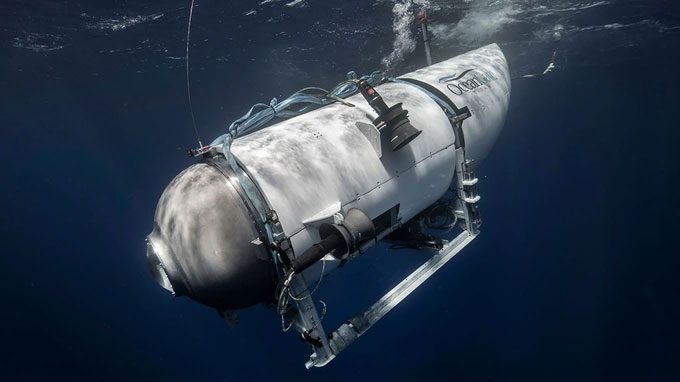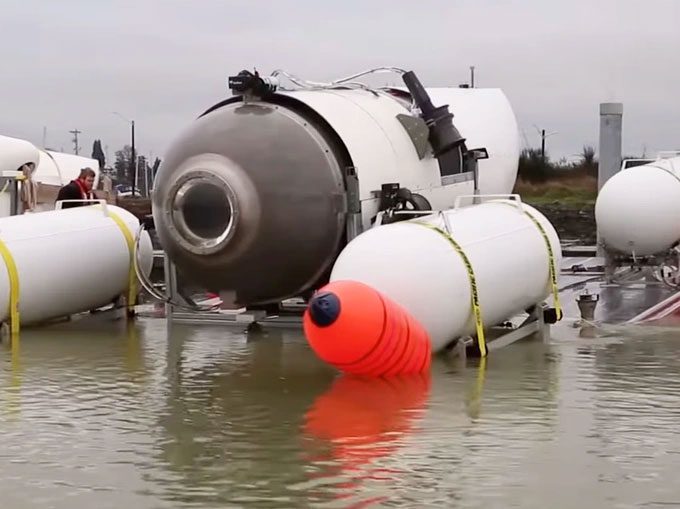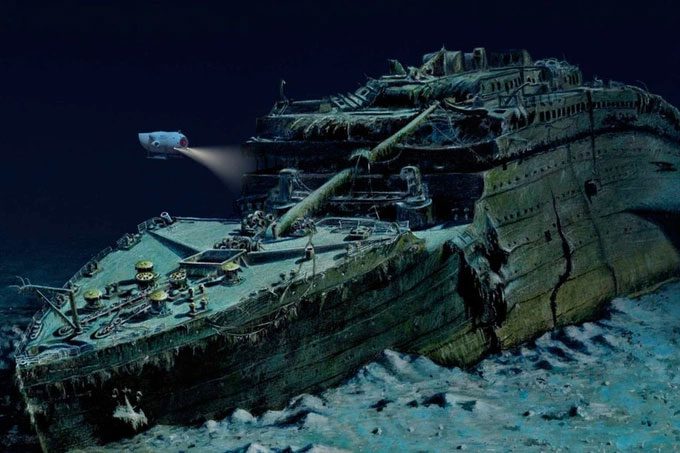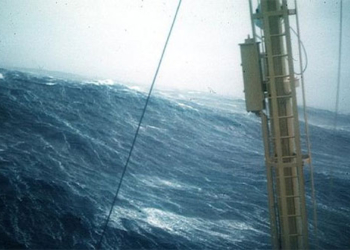According to Chris Parry, a former officer of the Royal Navy, the missing submersible may have lost connection, but the possibility of an accident occurring while passing through the wreckage of the Titanic cannot be ruled out.

The Titan submersible carrying 5 people is missing in the Atlantic Ocean. (Photo: OceanGate).
According to Reuters, the submersible named Titan, operated by OceanGate Expeditions, has been missing since Sunday (June 18) while carrying passengers to explore the wreck of the Titanic in the Atlantic Ocean.
Currently, rescue operations involving ships and aircraft from the U.S. and Canada have been deployed to search for the vessel. However, the situation is quite complex as the status of the submersible remains unclear.
According to Chris Parry, a former officer of the Royal Navy, there are three possible explanations for the disappearance of the submersible.
Lost Connection with the Surface

The most optimistic hope is that the Titan submersible has surfaced thanks to the emergency rescue system. (Photo: OceanGate).
The first hypothesis, and the most optimistic, is that the submersible is still functioning normally and has only lost communication with the surface and the mother ship.
According to OceanGate, the Titan is designed to carry a maximum of 5 people to depths of 4,000 meters for exploration, research, and data collection. Therefore, the Titan is relatively lightweight and has the ability to operate more efficiently than any other deep-sea submersible.
The submersible is also equipped with numerous safety features, including a real-time Hull Monitoring System (RTM) capable of detecting and providing early warnings to allow the pilot enough time to return safely to the surface. Thus, unless it encounters a major incident, it is likely that the Titan has surfaced.
Malfunction but Still Operational

Inside the Titan submersible. (Photo: OceanGate).
The second hypothesis according to Chris Parry is that the Titan experienced some sort of system malfunction, preventing it from moving and also resulting in a loss of signal. According to OceanGate, even in the event of a malfunction, those on board still have the ability to operate and repair or replace some components on-site.
In the worst-case scenario, the survival of those on board will depend on the remaining oxygen supply until they are rescued or until they can resolve the issue themselves.
Information from the operator indicates that the submersible has an emergency oxygen supply sufficient for 96 hours, and approximately 70 hours considering the morning of June 20, according to Hanoi time.
Trapped in the Wreckage of the Titanic

The wreckage of the Titanic can be extremely dangerous for exploration activities. (Photo: Getty).
The third hypothesis is that an unfortunate accident occurred while the submersible was exploring the wreck of the Titanic. “If it became entangled in the wreckage, it could have encountered a catastrophic incident,” Chris Parry expressed his view.
In 2010, explorers discovered a type of mysterious bacteria in the thick layers of dust from the wreck of the Titanic. They named this bacterium Halomonas titanicae and believe it might “devour” the remnants of the Titanic or turn it into a very dangerous area, with parts of the ship potentially collapsing at any time.
The former Royal Navy officer believes that if the submersible encountered trouble near the Titanic, rescue operations would be very challenging due to the rugged seabed of the area and the Titanic itself lying in a deep trench. Additionally, debris in the region could hinder locating and detecting the vessel using sonar waves.
John Mauger, a U.S. Rear Admiral overseeing the search and rescue operation, also acknowledged that the waters where the Titanic sank are a remote area, making search and rescue efforts truly difficult.





















































